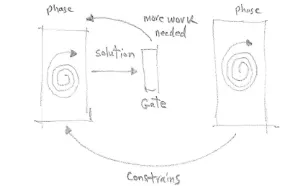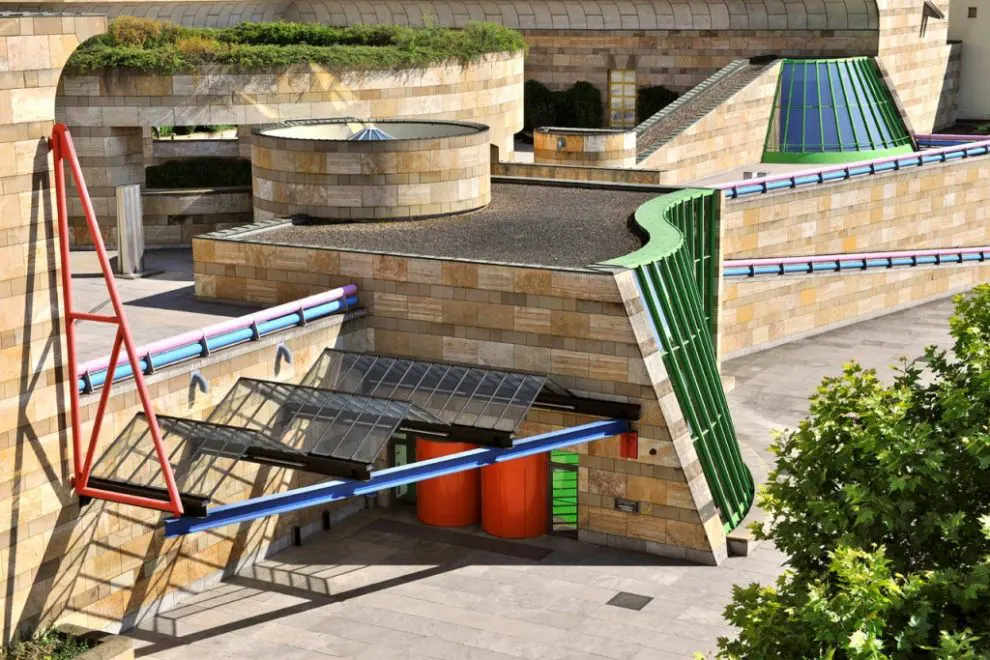Design Manager: Design Management Plan- Managing creative projects is the eighteenth article of a series of articles about design management in architecture practice. I have discussed in the previous articles what is design management. Who is the design manager in practice and is it a project or firm design management plan? The key functions of the design management plan in practice. Adding to that What needs to be managed in a firm in practice. This article is the thirteenth article on building and writing a design management plan.
In order to go further in showing the detailed approach to managing creative projects I need to show the difference between creative projects and non-creative projects. Design manager in architecture projects need to show how they differ in the level of creativity.
Design manager: Creative projects and non-creative projects
In my previous article, I have shown in detail the 7 criteria to define innovation in architecture. First, the concept fits the site in terms of context, historical, heritage, topography, aesthetics, and environment. The gauge is the more the concept fulfills these characteristics the more it’s innovative. Second, the new method: Design process, the process of generating the concept design tools and techniques. Firms in the world still use the conventional method of hand sketching and simple coloring techniques like watercolor. Architects For complex concepts use new tools and techniques such as computer-generated models to show the concept clearly to firm teams and clients. Third, New material: the architecture comprises the use of new material. Firms and architects invented through direct involvement in manufacturing new materials like terracotta used in elevations.
Fourth, Structure: complexity and stability, simplicity of structural design vs complexity of architectural design. How to turn complex forms and structures into simple building systems. Fifth, Project requirements: project targeted program, construction budget, and user’s comfort indoors and outdoors. Sixth, Realization: the process of realization of the architectural design, its simplicity, construction method, project budget, and construction time. Seventh, Style relevance: the architectural style of the concept design. Is it a new style?
Design management difference between creative and non-creative projects.
I have shown in my previous articles about design management what a design manager should consider in the design management plan. Every article stands on one specific item of the design management plan. Design manager in every project defines protocols or procedures as standard approaches to follow in the management of any project. As an extra procedure, a design manager with creative projects (as mentioned above) needs to define project roles and responsibilities and a simple graph to show project stages for all teams to understand.
Design manager to define a procedure or framework that he can easily customize for every creative project. This procedure should include defining stages, roles, tasks, and responsibilities. Risk management that protects the project from defects and delays at every stage. Decision-making process in critical matters. Control points to coincide with the start and end of every stage. Learning opportunities and feedback loops (meetings).
Design manager: Control points & learning opportunities procedure definition
A main feature in the design management plan with creative projects is the inclusion of control points and learning opportunity procedures. A control point is used (in meeting discussions) as approval or sign-off gateways and design reviews. See Figure 1, control point diagram.

The control point procedure set out by the design manager is very important. Its importance comes from learning what are the constraints at every stage. By setting out control points the full project team will learn many aspects of the intervention of the several disciplines in the project creation. Any structural constraints may affect the architectural design and require major changes in the external form. Any changes in the architectural form and function may require changes in the mechanical system like the air ducting.
In the discussion, the team will stand on many aspects of the project design. Like in critical matters how the team takes decisions within the aligned procedure. How do constraints affect many systems and the way of providing solutions. And what types of constraints arise in all the project design stages. The procedure of solving the problem and reverting the information to the project team.
Design manager: creative projects meetings and workshops
The design management plan should include the types of meetings and their principal agendas. The design manager can add more items to this agenda depending on the requirements of each project. In creative projects, the design manager should consider adding in the design management plan meetings like kick-off project meetings, buildings & Maintaining effect teams, project values and value parameters, design review and discussion, disagreement resolution, knowledge exchange, project closeout, handover projects, project study, and analysis. For every type of meeting, the team sets up goals, agendas, and expected meeting deliverables.
Workshops can vary in the purpose of use and setup. Workshops planned by the design manager to generate concepts related to project discipline, to introduce project presentation and content, discuss and exchange views about critical change in the project in any phase, to present a sub-consultant work and its intervention to the other project team, and a workshop with client between every successful stage.
In general, the design manager sets out the workshops in the life of the project design phases. The beginning of the stages of project inception and briefing. The interface between design and realization. Commissioning and project use.
The design manager in his design management plan needs to focus on one critical matter the generation of creative architecture, its difficulty, the process, and how to protect the creation within the architectural design process. The design manager has two methods to do that: first, he should include a detailed disruption of what the architect faces to generate the architecture including reflecting the client views, the architecture program, the project context and location, environmental matters, and the 7 criteria I have shown above.
The second method is to include meetings and workshops to show the team and get them involved in the process from the beginning. This will add value and contribute to the project creation and innovation.
To create an innovative design and project the project team must consider supporting the creation of the innovative design in all measures. Making all disciplines as much as possible compatible with the innovative design is an extreme success for the project team the structure, mechanical, electrical, landscape, infrastructure, and interior design. See Figure 2, one of the creative projects in Germany.

Firms in the world build – as they call it SYSTEM- used to facilitate the operations of work through the project lifecycle. This system will make the project team focus on innovative design and creation without paying much attention to management of related documents and drawings.
Synergis software presents a full system for use in any engineering practice and production facilities. The system has integrated tools with any architecture firm software like AutoCAD, and MS office. See video 1 AutoCAD integration from Synergis software.
The design manager can include the process of creating typical procedure for any ongoing project to reduce overhead by simulating this software. Adding to that BIM360 gives a full solution for integrating drawings and documents between all stakeholders. BIM makes project work more accurate and feasible for the architecture firm.
This article on design management provides a clear and practical approach to managing creative projects. The tips on creating a design management plan are valuable for ensuring projects run smoothly and efficiently. It’s a great resource for anyone looking to improve the organization and execution of design-driven initiatives.
you are welcome always; I have guest post available if you would like to write an article you are most welcome I will publish it in your name.